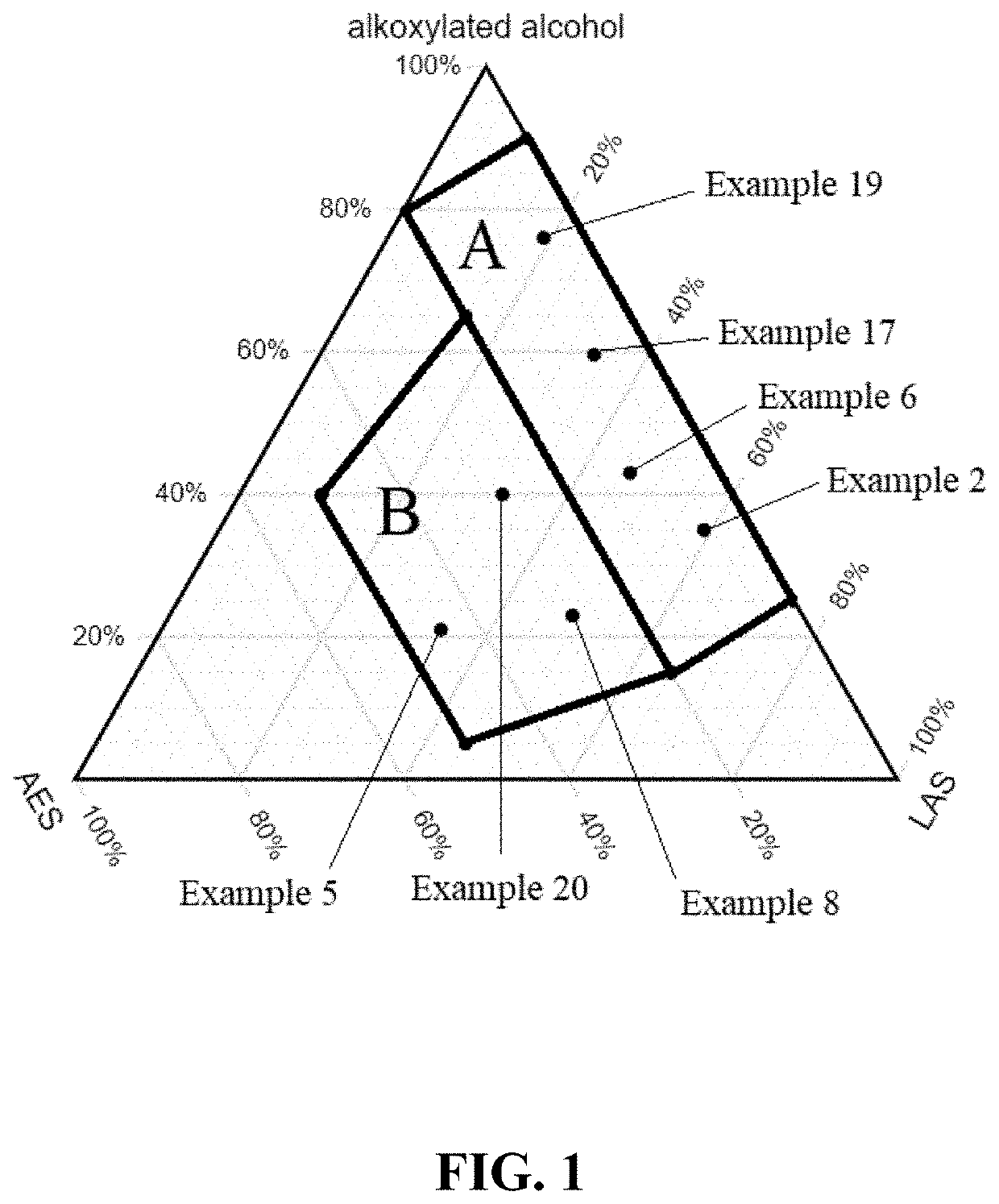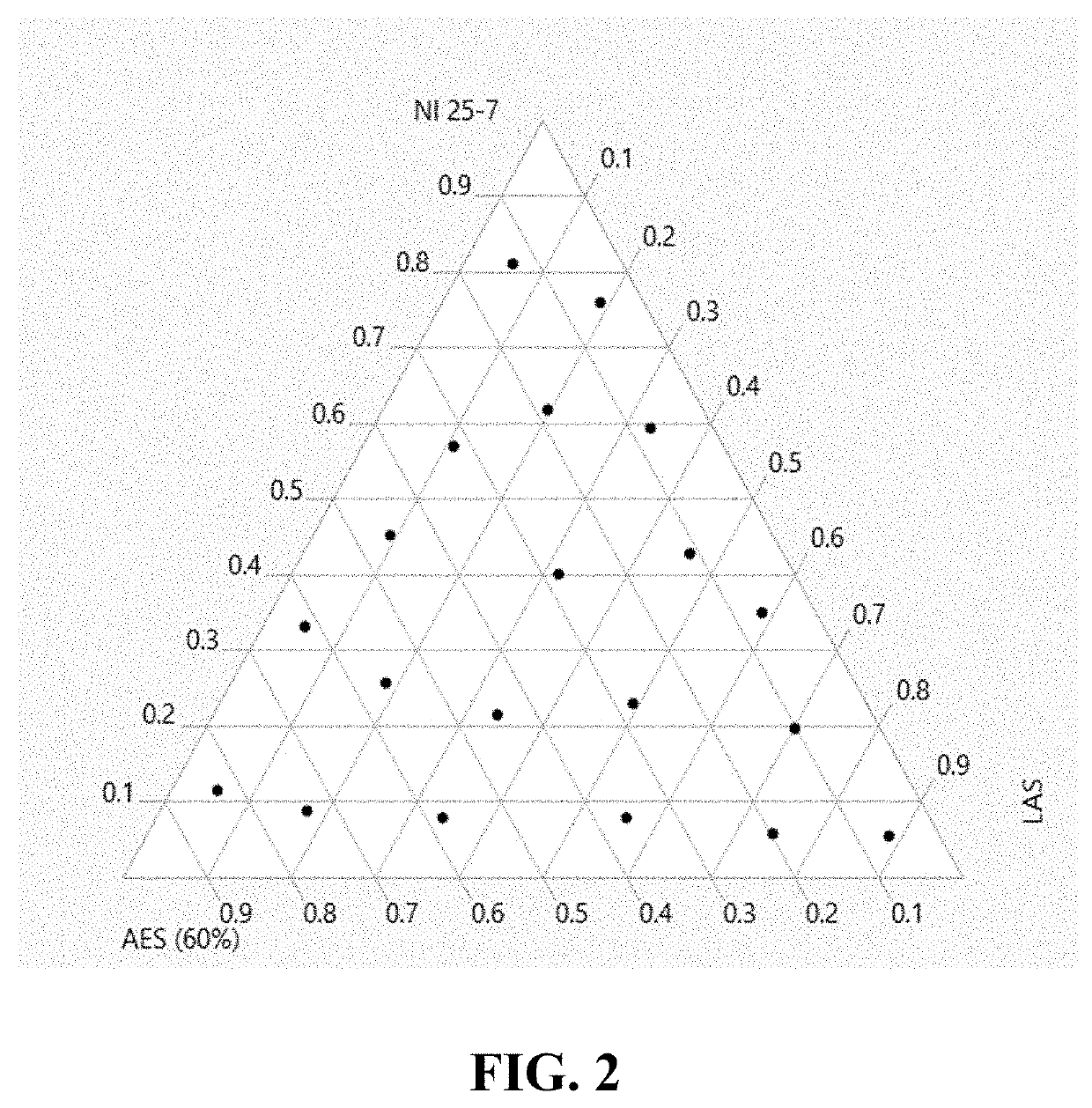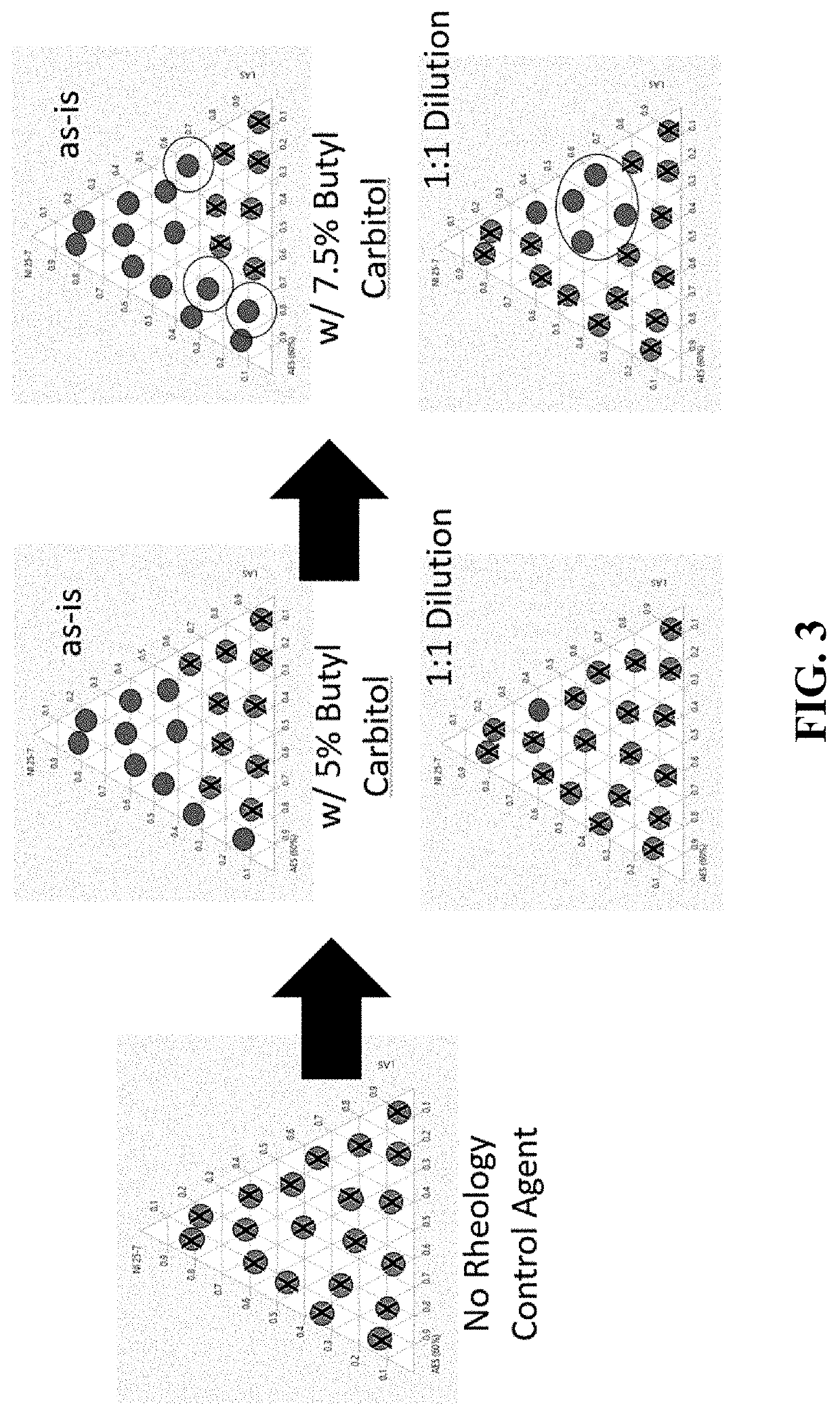Use of surfactant blend to control rheology of unit dose or liquid laundry detergent
a technology of surfactant and blend, which is applied in the direction of detergent composition, surface-active detergent composition, non-ionic surface active compound, etc., can solve the problems of thick liquid detergents that are unappealing to consumers, thick liquid detergents can only be concentrated, and thickening can happen, so as to achieve the effect of reducing water and solvent level, superior and unexpected results, and increasing active surfactant level
- Summary
- Abstract
- Description
- Claims
- Application Information
AI Technical Summary
Benefits of technology
Problems solved by technology
Method used
Image
Examples
embodiment
Liquid Laundry Embodiment and Unit Dose Embodiment
[0075]This disclosure also provides a liquid laundry embodiment. For example, the composition may include amounts of water and / or any of the other components suitable for a liquid laundry application, as understood by those of skill in the art. For example, a liquid laundry detergent may include the surfactant component described above that is present in an amount of from about 60 to about 75 weight percent actives based on a total weight of the detergent composition, about 3 to about 15 weight percent water based on a total weight of the detergent composition, and about 5 to about 15 weight percent actives of the rheology control agent based on a total weight of the detergent composition.
[0076]This disclosure also provides the unit dose embodiment. For example, the composition may include amounts of water and / or any of the other components suitable for a unit dose application, as understood by those of skill in the art. For example,...
example 1
[0083]The following Design of Experiment was used to measure the effect of particular surfactants on viscosity in a detergent Composition. The units per formulation were dependent on the amount of Alcohol Ethoxy Sulfate and Linear Alkylbenzene Sulfonic Acid in each Composition, but the approximate active surfactant in each Composition ranged from about 55 to 75% active surfactant. Since the C12-C15 Alcohol Ethoxylate brought in no inactive matter as well as monoethanolamine, compositions that included larger amounts of C12-C15 Alcohol Ethoxylate had fewer overall units per Composition and a higher active surfactant level. For this reason, the Compositions do not add up to 100 units.
[0084]Table 1 below sets forth ratios of active levels of various surfactants of twenty concentrated compositions, i.e., Compositions 1-20. These correspond to various points set forth in the ternary plot of FIG. 2. More specifically, this Design of Experiment varied the use level of Linear Alkylbenzene S...
example 2
[0092]In a next series of Examples, 5 units of Butyl Carbitol were added to each of the Compositions 1-20 above, thereby forming Compositions 21-40, as set forth in Table 3 below. The ratios of active levels of various surfactants of Compositions 21-40 are the same as those for Compositions 1-20 and as set forth in Table 1 above.
[0093]After formation, each is evaluated to determine viscosity at Viscosity at 75° F., cp, using a AR2000-EX Rheometer at a shear rate of 1.08 l / s with a geometry cone of 40 mm, 1:59:49 degree:min:sec, and a truncation gap of 52 microns. These Compositions are deemed to “pass” if they exhibit a viscosity of less than about 7,500 cP at 75° F. as determined using the aforementioned apparatus and conditions. However, Compositions having viscosities above about 7,500 cP at 75° F. as determined using the aforementioned apparatus and conditions are deemed to fail because they such viscosities tend to be too thick for consumer liking or processing. If the Composit...
PUM
| Property | Measurement | Unit |
|---|---|---|
| weight percent | aaaaa | aaaaa |
| weight percent | aaaaa | aaaaa |
| weight percent | aaaaa | aaaaa |
Abstract
Description
Claims
Application Information
 Login to View More
Login to View More - R&D
- Intellectual Property
- Life Sciences
- Materials
- Tech Scout
- Unparalleled Data Quality
- Higher Quality Content
- 60% Fewer Hallucinations
Browse by: Latest US Patents, China's latest patents, Technical Efficacy Thesaurus, Application Domain, Technology Topic, Popular Technical Reports.
© 2025 PatSnap. All rights reserved.Legal|Privacy policy|Modern Slavery Act Transparency Statement|Sitemap|About US| Contact US: help@patsnap.com



